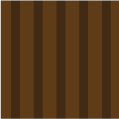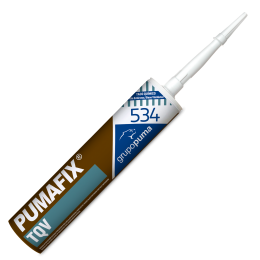 Pumafix® TQV
Pumafix® TQV

2-component fast curing vinylester injection resin.
Additional information
Technical Caracteristics
Pure resin based vinylester (styrene free).
Advantages and Uses
- Chemical bonding of horizontal and vertical anchors.
- Suitable for wet and dry substrates.
- Indoor and outdoor.
- Suitable for solid and hollow substrates.
- Anchoring machinery
- Anchoring bars, bolts, rods, plates…
- Fixing doors, railings, blinds, awnings, signs, aerials…
- For concrete, stone, brick or hollow concrete substrates.
- For assembling prefabricated concrete elements.
- Excellent mechanical resistance.
- Fast curing.
- Thixotropic, for both vertical and horizontal use.
Suitable Substrates
- Substrates must be resistant, stable, sound and clean, free of dust, demolding agents, organic products, etc.
- Once the perforation of the substrate has been made, clean any residue using compressed air or a cylindrical brush.
Application Procedure
INSTRUCTIONS FOR USE INSTALLATION INSTRUCTIONS IN SOLID BRICKWORK FACTORY
- Drill a hole in accordance with the diameter and depth shown on the application table. During the drilling process, the perpendicularity of the hole in the substrate should be checked.
- Clean the hole of dust, fragments, oil, water, grease and other contaminants before injecting the mortar (with the manual blower and standard manual brush).
- The cleaning of the hole consists of 4 blowing operations, 4 brushing operations followed by a further 4 blowing operations.
- Before brushing, the brush must be cleaned and the diameter checked to ensure it is the correct size.
- The threaded rod must be free from any dust, grease, oil and other impurities.
- Unscrew the top of the cartridge, engage the mixing nozzle to the cartridge and position in the gun.
- At the start of using a new cartridge, eject some product until a uniform colour of the mortar appears.
- Fill the drilled hole uniformly from the bottom up to avoid air pockets, moving the nozzle slowly outwards.
- Fill 2/3 of the depth of the drilled hole with mortar.
- Insert the threaded rod slowly and with a slight rotating movement, remove the excess mortar injected from around the threaded rod.
- Wait the necessary curing time in accordance with the datasheet.
- Do not move or load the anchor until the curing process has finished.
INSTALLATION INSTRUCTIONS IN HOLLOW/PERFORATED BRICKWORK FACTORY
- Unscrew the top of the cartridge, engage the mixing nozzle to the cartridge and position in the gun.
- At the start of using a new cartridge, eject some product until a uniform colour of the mortar appears.
- Fill the drilled hole uniformly from the bottom up to avoid air pockets, moving the nozzle slowly outwards.
- Fill 2/3 of the depth of the drilled hole with mortar.
- Insert the threaded rod slowly and with a slight rotating movement, remove the excess mortar injected from around the threaded rod.
- Wait the necessary curing time in accordance with the datasheet.
- Do not move or load the anchor until the curing process has finished.
- Remove the top of the plastic sieve.
- Introduce the plastic sieve in the hole.
- Fill the sieve uniformly from the bottom up, moving the mixing nozzle slowly towards the outside: move the mixing nozzle 10 mm towards the outside each time you pull the trigger.
- Completely fill the sieve.
- Place the top on the filled plastic sieve.
- Immediately insert the threaded rod slowly and with a slight rotating movement, removing the excess mortar injected from around the threaded rod.
- Wait the necessary curing time in accordance with the datasheet.
- Do not move or load the anchor until the curing process has finished.
| Anchor | Installation | Resistance | Permissible load | |||||
| Rod class 8,8 | Drill piece diameter d0 | Hole depth hef | Standard distance edges CCr | Standard distance anchors SCr |
Torque Tinst |
Charasteristic resistance NRk |
Concrete C20/25 | Concrete C20/25 |
| [mm] | [mm] | [mm] | [mm] | [N.m] |
Traction [kN] |
Traction [kN] |
Shear [kN] |
|
| M8 | 10 | 80 | 80 | 160 | 10 | 29,3 | 11,6 | 8,1 |
| M10 | 12 | 90 | 90 | 180 | 20 | 46,4 | 18,4 | 12,9 |
| M12 | 14 | 110 | 110 | 220 | 40 | 63,8 | 25,3 | 18,7 |
| M16 | 18 | 125 | 125 | 250 | 80 | 76,9 | 30,5 | 34,9 |
| M20 | 24 | 170 | 170 | 340 | 120 | 112,7 | 44,7 | 54,4 |
Safety factor of 2.52 load stress
APPLICATION TABLE FOT CORRUTAGED CONCRETE BARS
|
Bar diameter d5 |
Drill bit diameter d0 |
Permissible load Fs in C20/25 concrete. High tack 500 MPa corrutaged steel bar |
|||||||
| [mm] | [mm] |
Hole |
[mm] [kN] |
[mm] [kN] |
[mm] [kN] |
[mm] [kN] |
[mm] [kN] |
[mm]*1 [kN]*1 |
|
| 8 | 10 | Iv | 80 | 120 | 160 | 200 | 240 | 322 | |
| Fs [C20/25] | 5,4 | 8,1 | 10,9 | 13,6 | 16,3 | 21,9 | |||
| 10 | 12 | Iv | 100 | 150 | 200 | 250 | 300 | 403 | |
| Fs [C20/25] | 8,5 | 12,7 | 17 | 21,2 | 25,4 | 34,2 | |||
| 12 | 16 | Iv | 120 | 180 | 240 | 300 | 360 | 483 | |
| Fs [C20/25] | 12,2 | 18,3 | 24,4 | 30,5 | 36,6 | 49,2 | |||
| 14 | 18 | Iv | 140 | 210 | 280 | 350 | 420 | 564 | |
| Fs [C20/25] | 16,6 | 24,9 | 33,3 | 41,6 | 49,9 | 66,9 | |||
*1 Maximum loads according to elastic limit of 500 MPa corrutaged steel
Recommendations
- Do not use solvents.
- On site use and adjustments to the product are only possible before the hardening of PUMAFIX TQV.
- Store between 5º C and 25º C.
- Consult the Technical Department for any application not specified in this Technical Datasheet.
- For all information regarding safety during handling, transport, storage and use of product please consult the current version of the Product's Safety Sheet.
Packaging and Storage
380 ml 2-component cartridges. (application with special gun) and 280 ml. (application with mono-component product guns).Shelf life: up to 18 months in sealed original packaging, sheltered from weather conditions and humidity.
Technical data
(Statistical data obtained under standard conditions)
| Density | 1.75 Kg/dm³ |
| Double the load times in wet conditions | |
| Min application temperature | 5º C |
| Max application temperature | 30º C |
| Working temperature interval after curing | from -40º C to 80º C |
| Application temperature | Open time | Curing time |
| 5º C | 15 min. | 120 min. |
| 10º C | 12 min. | 90 min. |
| 20º C | 6 min. | 45 min. |
| 30º C | 3 min. |
20 min. |
Calculation method: Fs (kN)= d0 x Iv x Ψ c / 100
d0 and Iv in mm, min. spacing 10 ds1 min. edge distance 5 ds
|
Concrete resistance class |
C12/15 | C16/20 | C20/25 | C25/30 | C30/37 | C35/45 | C40/50 | C45/55 | C55/60 | |
| (*) | de Ø 8 mm a 25 mm | 1,6 | 2 | 2,3 | 2,7 | 3 | 3,4 | 3,7 | 4 | 4,3 |
| (**) | 0,452 | 0,565 | 0,650 | 0,763 | 0,848 | 0,961 | 1,046 | 1,131 | 1,216 | |
| (*) | de Ø 26 mm a 32 mm | 1,6 | 2 | 2,3 | 2,7 | |||||
| (**) | 0,452 | 0,565 | 0,650 | 0,763 | ||||||
| (*) | Ø 34 mm | 1,6 | 2 | 2,3 | 2,6 | |||||
| (**) | 0,452 | 0,565 | 0,650 | 0,735 | ||||||
| (*) | Ø 36 mm | 1,5 | 1,9 | 2,2 | 2,6 | |||||
| (**) | 0,424 | 0,537 | 0,622 | 0,735 | ||||||
| (*) | Ø 40 mm | 1,5 | 1,8 | 2,1 | 2,5 | |||||
| (**) | 0,424 | 0,509 | 0,594 | 0,707 | ||||||
* Charasteristic interchange resistance for good anchorage conditions (EC2) ft (MPa)
** Factor according to concrete type Ψ c
Ψ c = 0,06 x π x ft x Ψs2 / γ s
γ s = 1,15 safety coefficient
Ψs = 1,5 high tack bar coefficient (1)
(1) For smooth bars use Ψs = 1,0
PERFORMANCE: NUMBER OF ANCHORS ACCORDING TO DIAMETER AND CARTRIDGE TYPE
| Anchorage | Concrete rods | Corrutaged concrete bars | ||
| Diámetro | 380 ml. | 280 ml. | 380 ml. | 280 ml. |
| 8 | 90/100 | 65/75 | 90/100 | 65/75 |
| 10 | 55/55 | 35/40 | 50/55 | 35/40 |
| 12 | 30/34 | 20/24 | 20/25 | 14/19 |
| 16 | 16/18 | 11/13 | 12/14 | 9/11 |
| 20 | 7/8 | 5/6 | 7/8 | 5/6 |
Legal Disclaimer
GRUPO PUMA is not responsible, in any case, for the application of its products or constructive solutions carried out by the application company or other parties involved in the process and / or execution of the work, limiting the responsibility of GRUPO PUMA exclusively to the damages directly attributable to the supplied products, individually or integrated in systems, due to failures in their manufacturing process.
In any case, the drafter of the work project, the technical management or the person responsible for the work, or collaterally the application company or other parties involved in the process and / or execution of the work, must ensure the suitability of the products addressing the characteristics of them, as well as the conditions, support and possible pathologies of the work in question.
The values obtained by GRUPO PUMAS's products or its constructive solutions that, as the case may be, are determined by the EN standards or any other regulation that applies to it in each case refers exclusively to the conditions specifically stipulated in said regulation and that are referred to, among others, to certain characteristics of the support, humidity and temperature conditions, etc. without being them required in the tests obtained under different conditions, all in accordance with the relevant regulation.